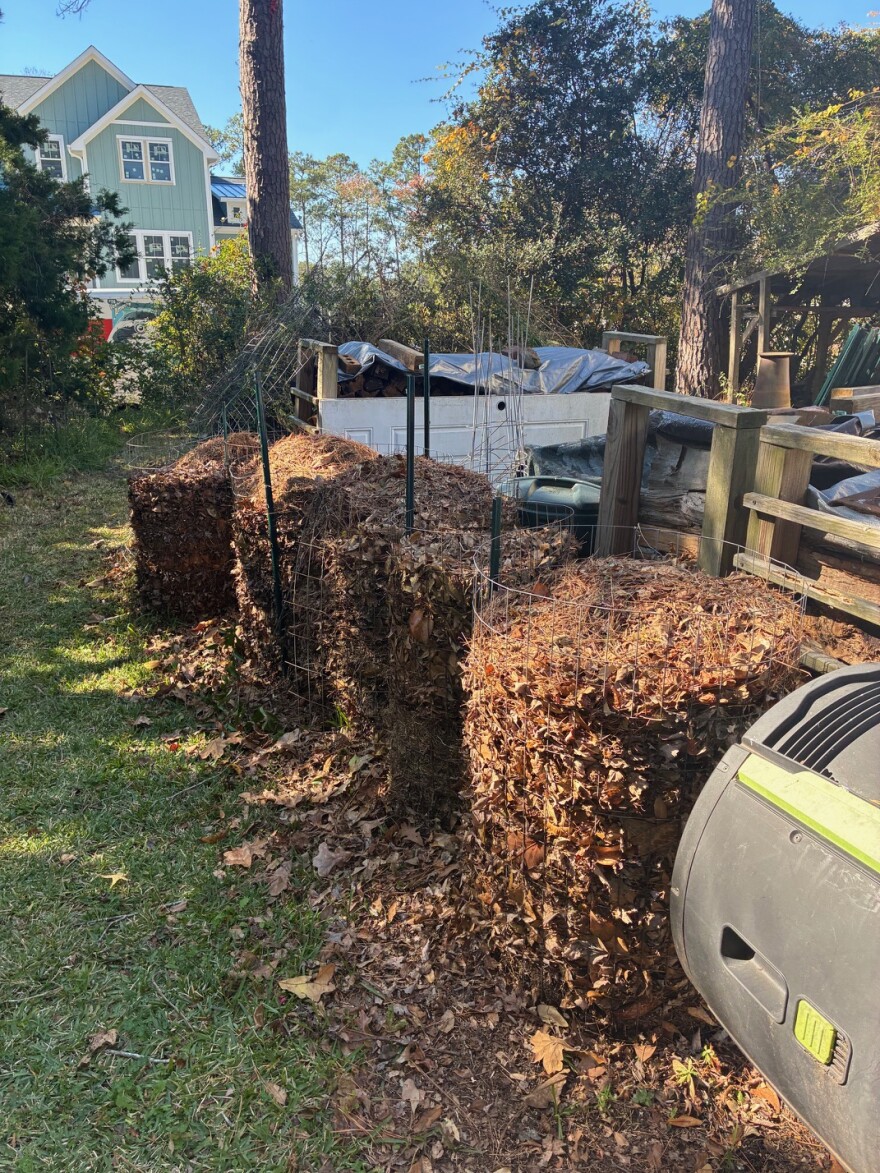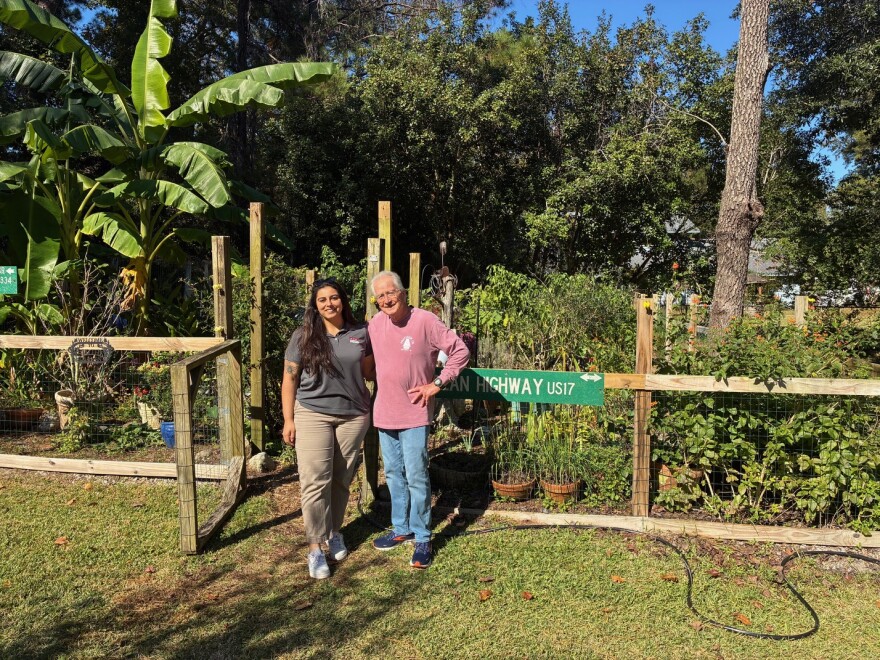The leaves are falling all over the Cape Fear Region, but that doesn’t mean you should just get rid of them. Gabriella de Souza is the consumer horticulture agent for New Hanover County’s arboretum and cooperative extension. She said those crunchy fallen leaves make an amazing habitat.
"It actually is really important to leave leaves like this, because it creates habitat for a lot of the pollinators that are overwintering and are going to come out in the springtime,” she said.
At the Arboretum, they push the fallen leaves into beds, especially around trees, to keep weeds at bay and leave plenty of space for nesting critters.
"If you really don't like the look of them, you can rake them, put them in a corner, blow them, if you want, but just avoid mulching them,” de Souza said. Chopping the leaves into tiny bits kills those nesting pollinators, and leaves them with no habitat.
She said it’s also valuable to leave dead plants around — don’t cut back ornamental grasses, for instance — let them stand, even if they’re looking dried out. As we walk over to the native plant garden in the county arboretum, she says the same goes for flowers.

"Just looking at this like the spent echinacea," de Souza said. "People would instantly look at that and be like, 'Oh my God, it looks so dead. It's time to cut it out.'" Bur she said that's the wrong attitude: it's better to leave the seed heads. "So these are all spent flowers, and they have little seeds inside of the heads here. It's really good food for wildlife. And birds love it.”
De Souza is a vegetable gardener herself, and comes from a long line of green thumbs. She has a hot tip for anyone who loved their tomato plants this year.
"You can take your peppers, like bell peppers, or jalapenos, or whatever you grew this summer, and actually cut them back pretty hard, and over winter them," she explained. "I like to put mine in a five gallon bucket and just drill some holes in the bucket, and you can leave it in your garage, just water every once in a while, and then bring them back out in the springtime. They'll flesh really good, and you'll get a whole new crop. You don't have to start them from seed.”
But if you’re gardening in beds, now is a great time to prepare them for the next round of plantings. Particularly with the recent freeze, tomatoes and other cold-sensitive plants are now out. De Souza’s uncle is an impressive gardener too — when I asked if we could check out a home garden, she brought me to his house in Ogden. David Miller planned his fall garden partially around the freeze that hit Wilmington this week, harvesting his last peppers and beans.

“I started, I was probably about 10 years old,” he said. Now age 75, he and his niece are the voices of experience and schooling.
David Miller’s beautiful backyard garden was still full of peppers, legumes, and cabbages the first week in November. Some of the beans were still on the vine when de Souza and I showed up, and she took full advantage — taking a handful to have for lunch. But after this week’s freeze, he’s just got the cabbages left.
"We'll eat these first, and then I'm planting potatoes in a couple of the beds,” Miller explained.
With the beds cleared from the freeze, Miller will grab some of his compost and mix it into the empty beds along with Lime to raise the PH. The potatoes he’s planting will go in the same beds the cabbages are in now.
"Try not to follow the tomatoes and what have you with potatoes. You try not to because they're in the same family and same diseases, I guess," Miller said.
De Souza agreed, adding that the plants use the same nutrients. "You know, if you plant a crop of tomatoes and one one bed, and then you expect to plant potatoes afterwards, they're gonna want the same nutrients as before, and you've depleted the supply.”

Miller has a clever method of composting, too. He gathers up all the leaves from his yard and stores them in cylindrical cages — it gives critters a nesting ground while keeping them nice and tidy and ready for composting.
He’ll spend these winter months prepping his beds for a February planting and laying down pine straw on the garden paths to keep the weeds at bay. "You never quit," he said.
That’s the attitude that won him the 4H prize when he was 12 years old. And it’ll keep him well fed from his garden during all the growing seasons.



